HOW TO TUNE YOUR GUITAR
One of the most important steps when learning guitar is to learn how to tune it properly. This blogpost will teach you the fundamentals of standard guitar tuning by using the brand-new Ortega tuner.
Clip-on Tuner OET-BK
The new clip-on tuner by Ortega Guitars is a chromatic tuner that can be adjusted to different frequencies and clips onto your headstock. It has a variety of modes, including Chromatic, Guitar, Bass, Ukulele, Bass, Violin, and Ukulele.
Five tuning modes

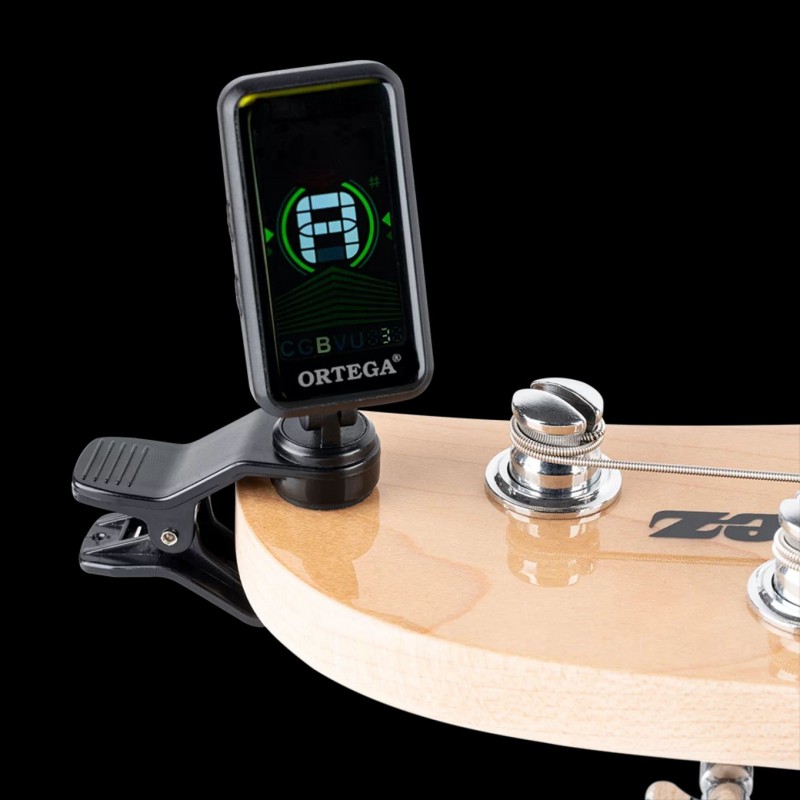



CHROMATIC
GUITAR
BASS
VIOLIN
UKULELE
Standard guitar tuning
There are various distinct guitar tunings, but the standard tuning pattern is by far the most common. The notes of the guitar are E, A, D, G, B, and E in this tuning, from thickest to thinnest string.
There are many useful mnemonics to help you remember the order of the six open strings. You can make up your own or use this example:
Eddie Ate Dynamite Good Bye Eddie
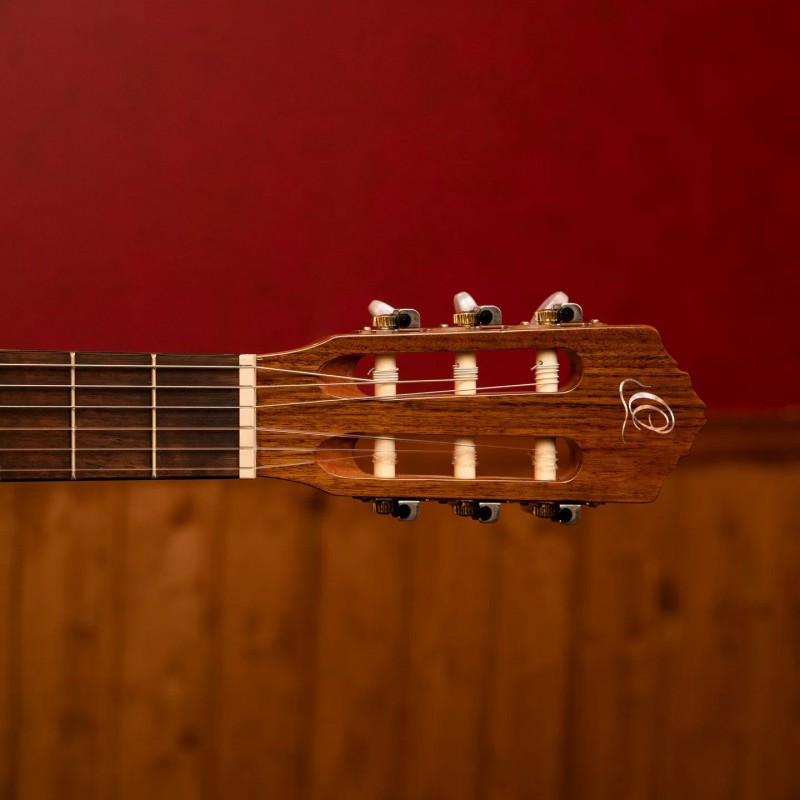
Clip-on guitar tuner
With Ortega’s tuner, you can easily tune your guitar without having a perfect pitch. The tuner shows the note that is detected, and signals if it is flat (too low) or sharp (too high).
FLAT
In this photo, the pitch of your guitar is a bit too flat. You have to tune up the guitar string.
SHARP
Here, the played note is too high and has to be tuned down by turning the tuning machine knobs.
IN TUNE
When the note is in tune your guitar tuner will turn its color to green.
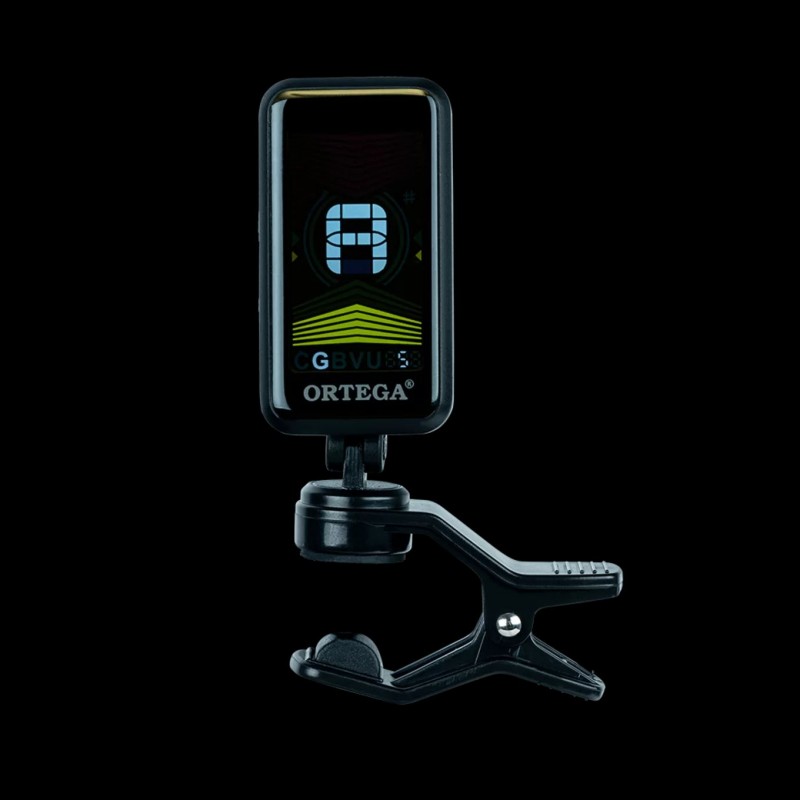

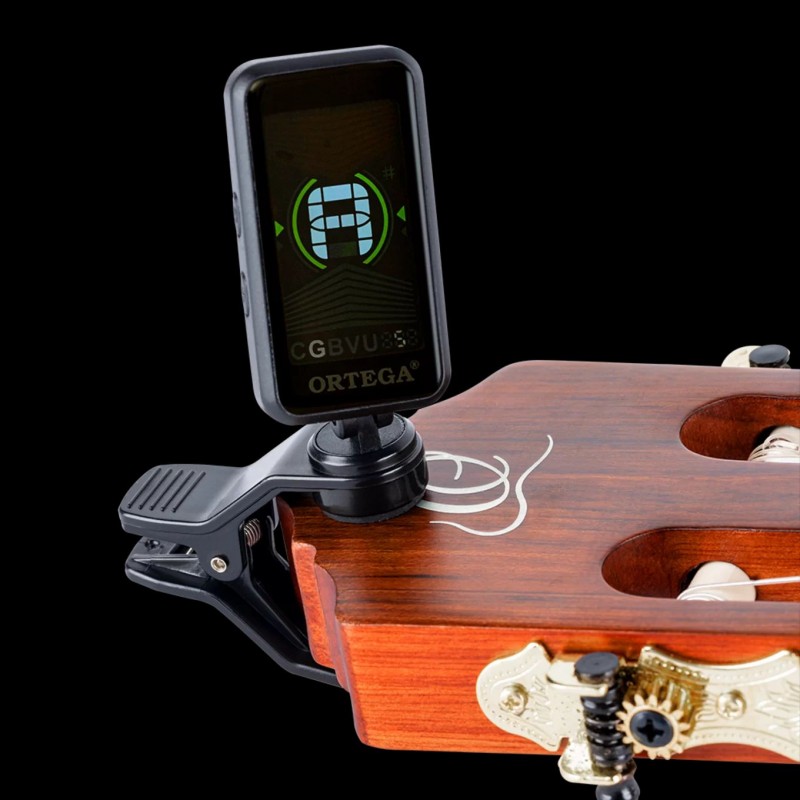
1) Attach the tuner
First, you have to attach your clip-on tuner to your guitar’s headstock with the built-in clamp.
2) Adjust the screen
Now adjust the screen so that it is directly facing you and is easy to see.
3) Turn on and select the mode
By pressing the button once, you can turn on your tuner. When you press it again, you can choose the right mode. G stands for guitar mode.
4) Tuning the E string
5) Tuning the A string
In this example, the A string is too sharp and has to be tuned down.
6) Tuning the D string
Now you can progress with the third string and tune it to D.
7) Tuning the remaining strings
After that, you can tune the G, B, and E strings. In case a string is out of tune, repeat the previous steps.

Established in 1994, Ortega Guitars introduced German design to authentic and traditional methods of guitar making. Committed to innovation and quality, Ortega strives to improve what is expected at every level of all their acoustic instruments.
Options like the 12hole bridge, often found only on high-end guitars, are standard on Ortega entry level to professional nylon string guitars. Their wide variety of body an neck sizes accomodates all ages giving everyone an opportunity to learn and play. In addition, they have released one of the widest selection of instruments specifically designed for the wide variety of left-handed players in 2020.
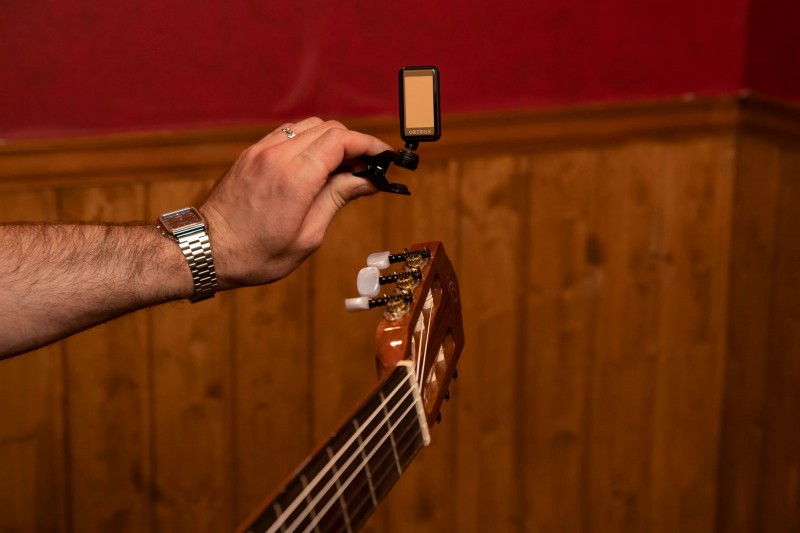
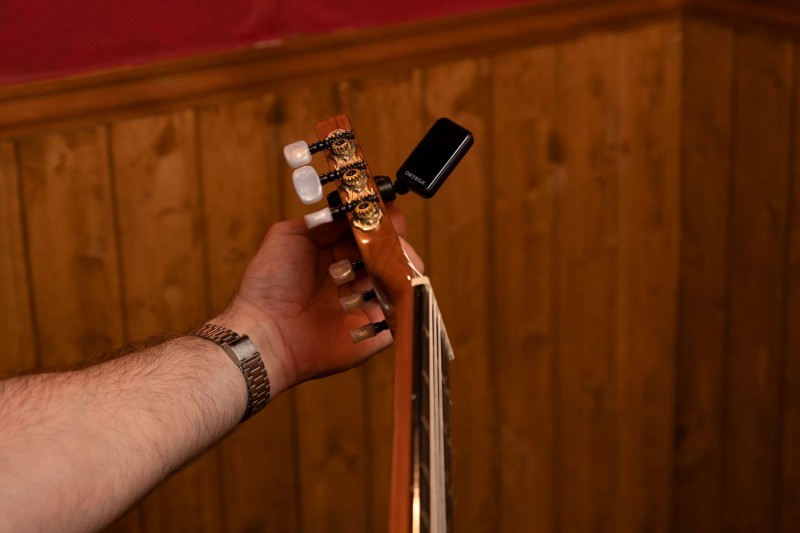
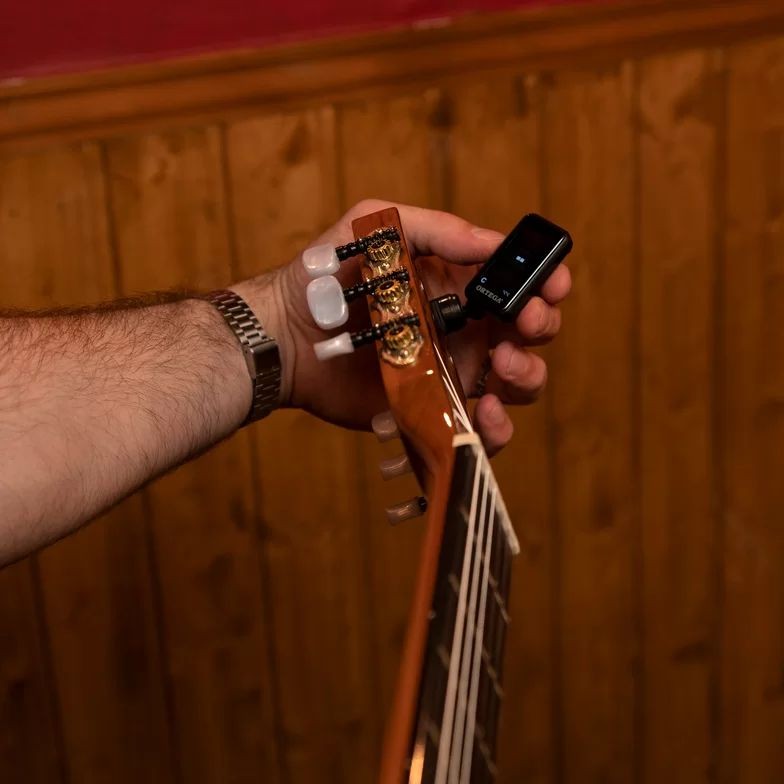
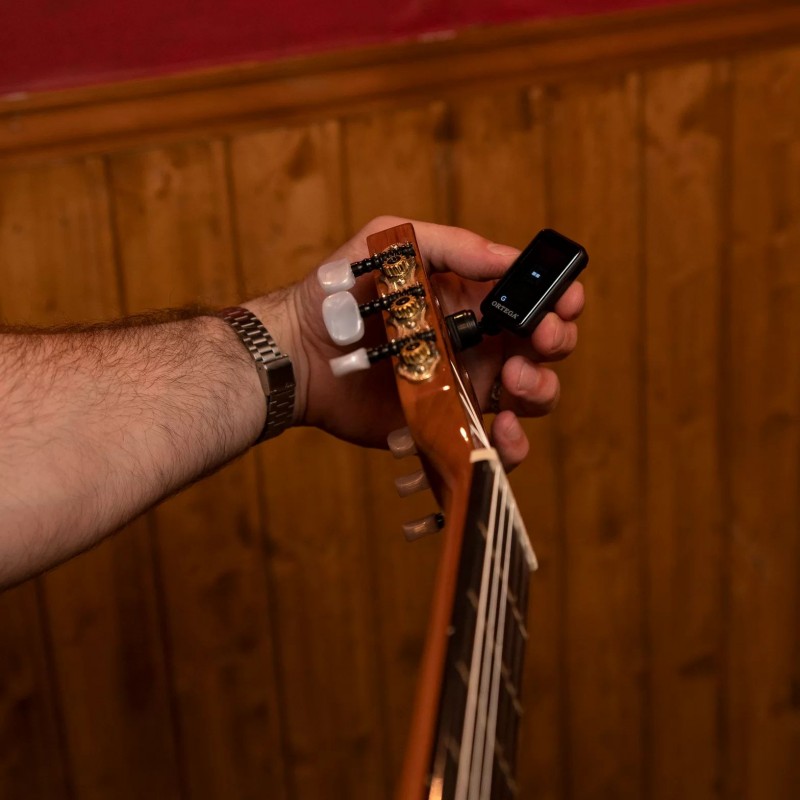
The first string is too flat and has to be tuned up. Slightly turn the tuning knob counterclockwise.
The tone is now a bit higher but still not in tune. Turn the knob a bit more.
When the first string is in tune, your tuner’s screen will light up in a green color.
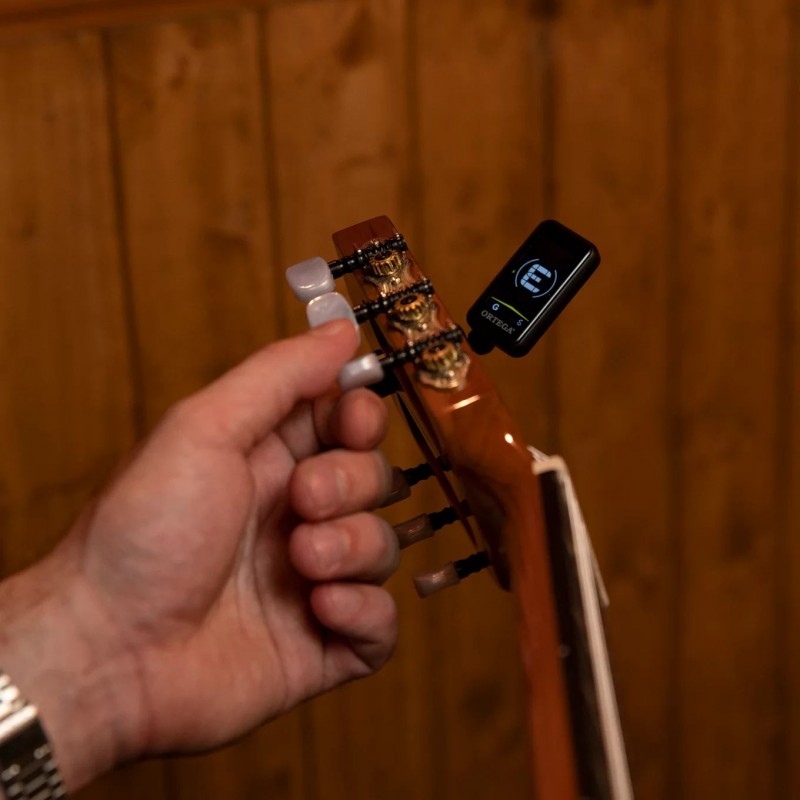
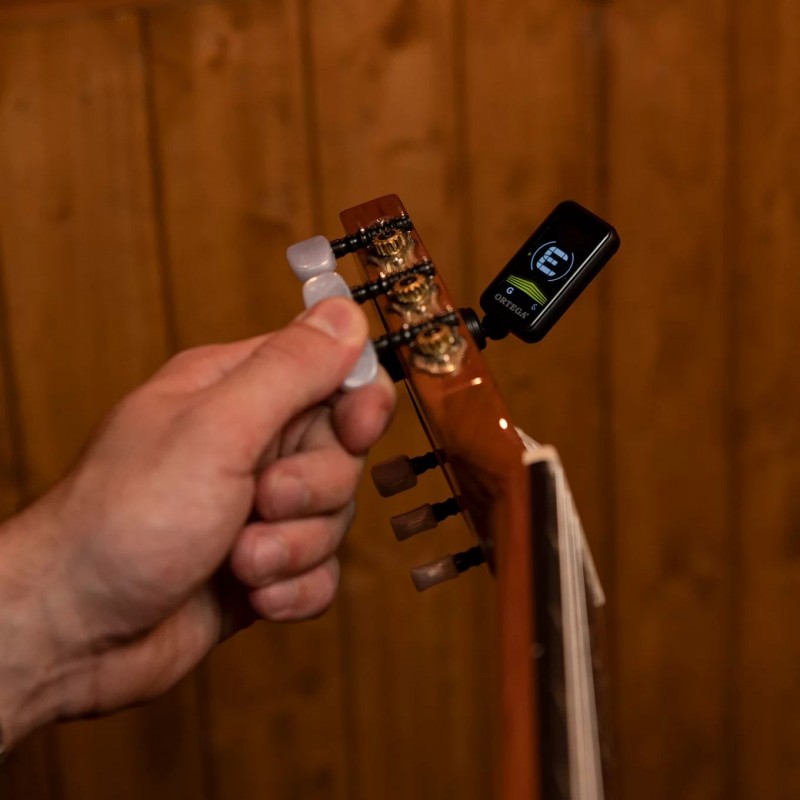
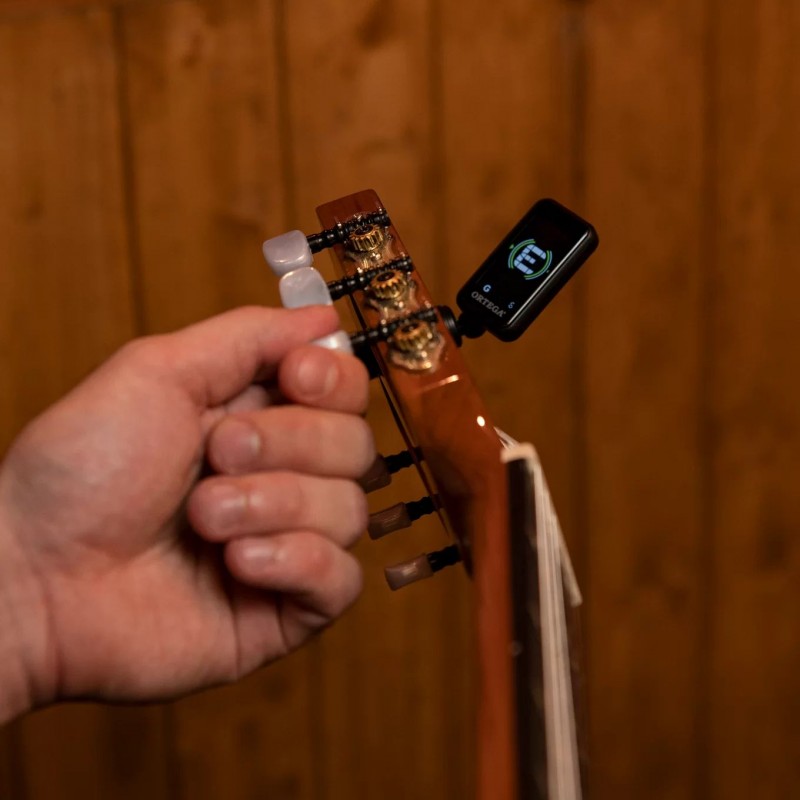
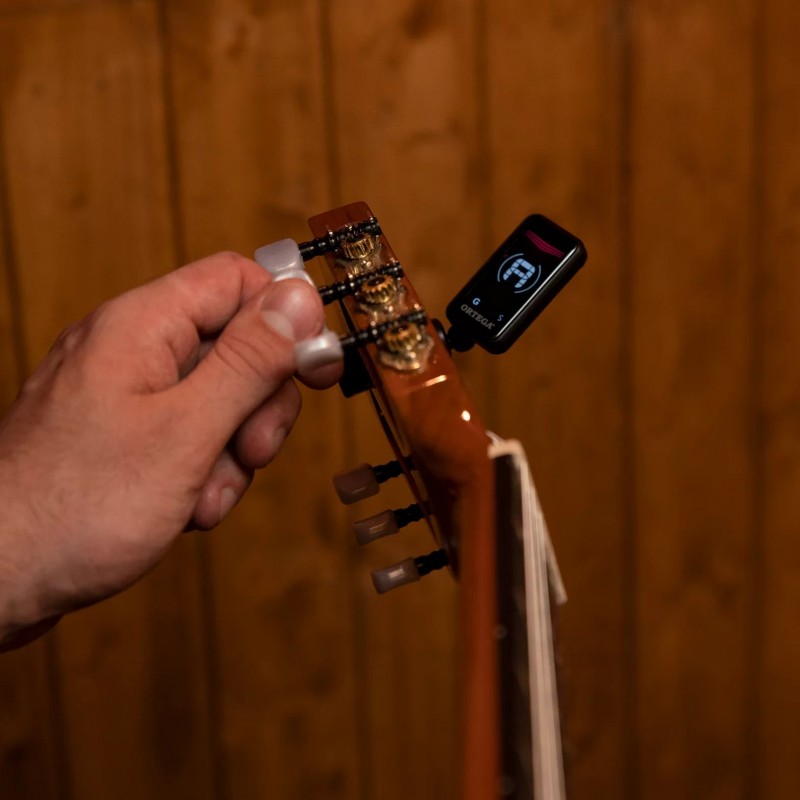

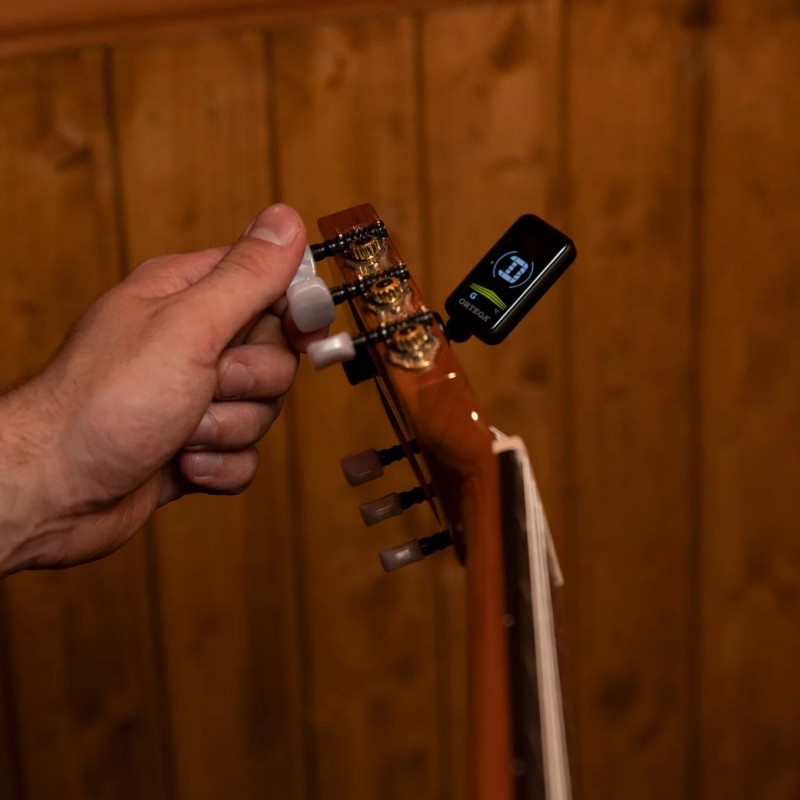
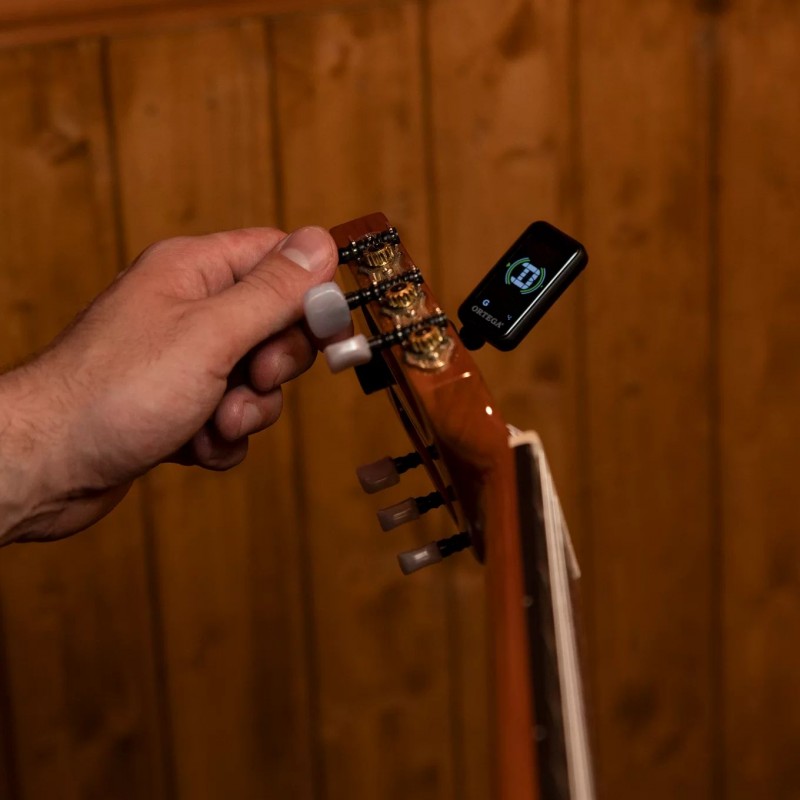
HOW TO TUNE YOUR GUITAR
One of the most important steps when learning guitar is to learn how to tune it properly. This blogpost will teach you the fundamentals of standard guitar tuning by using the brand-new Ortega tuner.
Clip-on Tuner OET-BK
The new clip-on tuner by Ortega Guitars is a chromatic tuner that can be adjusted to different frequencies and clips onto your headstock. It has a variety of modes, including Chromatic, Guitar, Bass, Ukulele, Bass, Violin, and Ukulele.
Five tuning modes





CHROMATIC
GUITAR
BASS
VIOLIN
UKULELE
Standard guitar tuning
There are various distinct guitar tunings, but the standard tuning pattern is by far the most common. The notes of the guitar are E, A, D, G, B, and E in this tuning, from thickest to thinnest string.
There are many useful mnemonics to help you remember the order of the six open strings. You can make up your own or use this example:
Eddie Ate Dynamite Good Bye Eddie

Clip-on guitar tuner
With Ortega’s tuner, you can easily tune your guitar without having a perfect pitch. The tuner shows the note that is detected, and signals if it is flat (too low) or sharp (too high).
FLAT
In this photo, the pitch of your guitar is a bit too flat. You have to tune up the guitar string.
SHARP
Here, the played note is too high and has to be tuned down by turning the tuning machine knobs.
IN TUNE
When the note is in tune your guitar tuner will turn its color to green.



1) Attach the tuner
First, you have to attach your clip-on tuner to your guitar’s headstock with the built-in clamp.
2) Adjust the screen
Now adjust the screen so that it is directly facing you and is easy to see.
3) Turn on and select the mode
By pressing the button once, you can turn on your tuner. When you press it again, you can choose the right mode. G stands for guitar mode.
4) Tuning the E string
5) Tuning the A string
In this example, the A string is too sharp and has to be tuned down.
6) Tuning the D string
Now you can progress with the third string and tune it to D.
7) Tuning the remaining strings
After that, you can tune the G, B, and E strings. In case a string is out of tune, repeat the previous steps.

Established in 1994, Ortega Guitars introduced German design to authentic and traditional methods of guitar making. Committed to innovation and quality, Ortega strives to improve what is expected at every level of all their acoustic instruments.
Options like the 12hole bridge, often found only on high-end guitars, are standard on Ortega entry level to professional nylon string guitars. Their wide variety of body an neck sizes accomodates all ages giving everyone an opportunity to learn and play. In addition, they have released one of the widest selection of instruments specifically designed for the wide variety of left-handed players in 2020.




The first string is too flat and has to be tuned up. Slightly turn the tuning knob counterclockwise.
The tone is now a bit higher but still not in tune. Turn the knob a bit more.
When the first string is in tune, your tuner’s screen will light up in a green color.
























